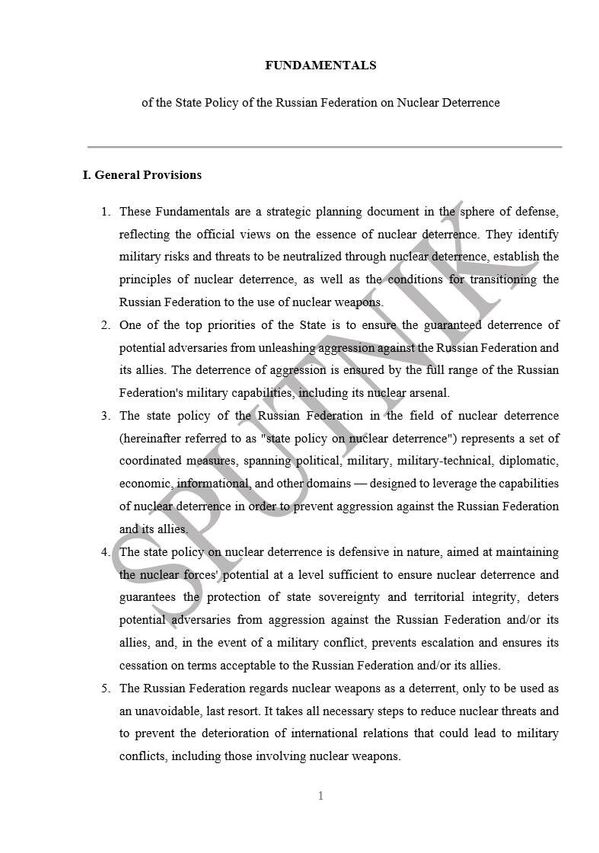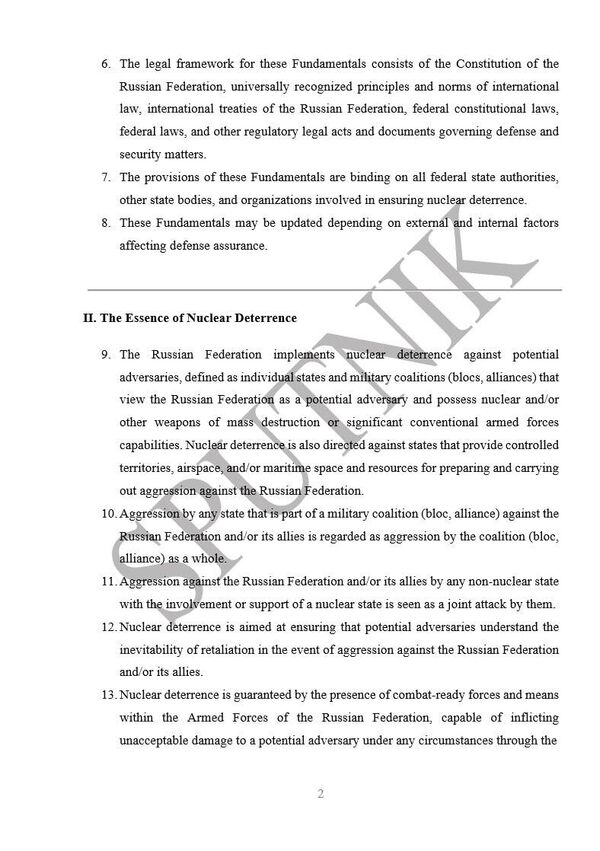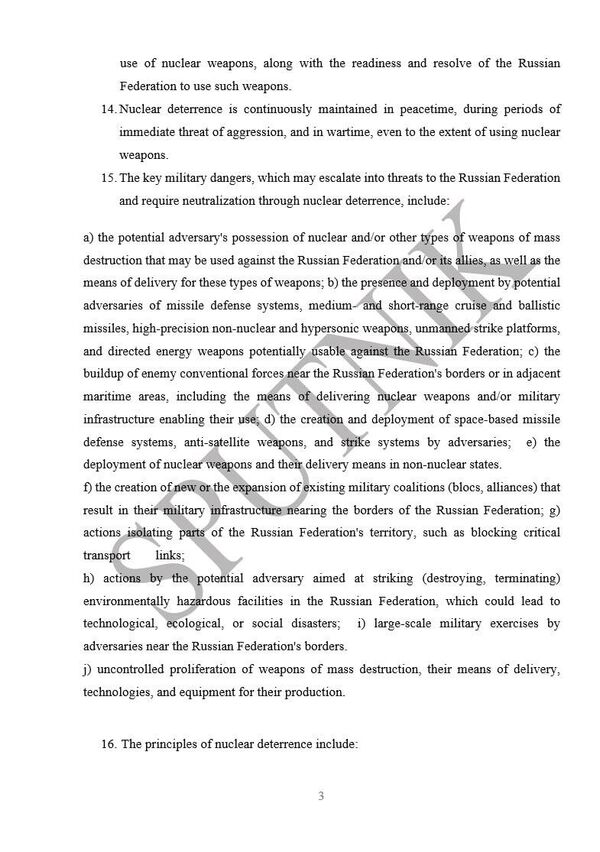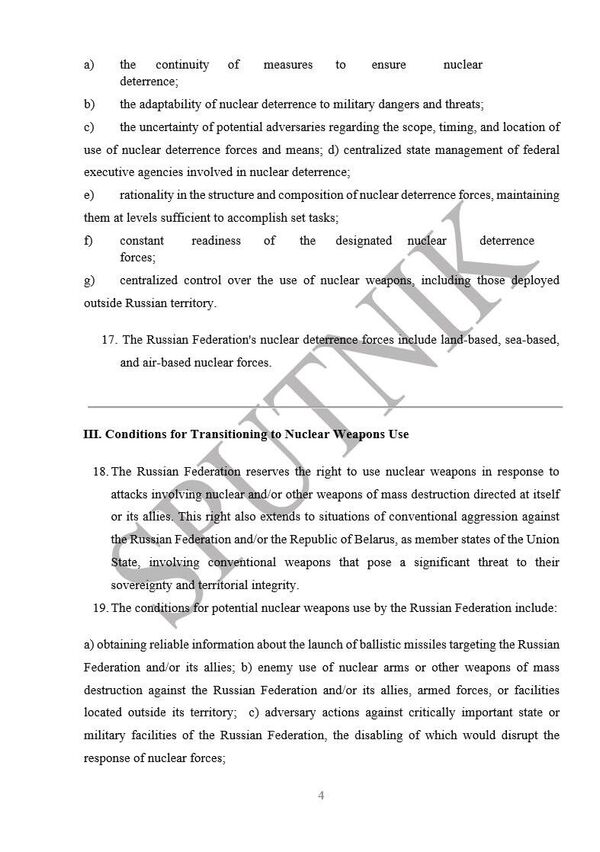
The entering into force of Russia’s updated nuke doctrine, the purpose of which was analyzed here in late September, made headlines across the world because it coincided with a major escalation of the NATO-Russian proxy war in Ukraine. The US allowed Ukraine to use its ATACMS inside of Russia’s pre-2014 territory despite Moscow warning how dangerous that would be. This moment of truth was analyzed here for those who’d like to learn more about how it’ll influence the contours of this conflict.
The circumstances in which Russia might resort to using nukes can be better understood after Sputnik published an unofficial translation of this doctrine here (see annex). The document stipulates that their purpose is to deter a wide range of threats and that they’ll only be used as a last resort. Such threats include everything from nearby large-scale military drills by Russia’s foes to the blocking of critical transport links in a likely nod to Kaliningrad among well-known ones like overwhelming conventional attacks, et al.
Moreover, Russia will regard such threats by countries with the backing of others as joint acts of aggression, thus placing these proxies’ patrons in its crosshairs if they cross its most sensitive red lines. The main point that’s being conveyed through these updated terms is that Russia will not allow Ukraine to be used as NATO’s proxy for inflicting the bloc’s hoped-for strategic defeat upon it. The timing of its publication suggests that the spree of provocations since February 2022 reshaped Russia’s thinking.
Targets such as the Kremlin, early warning systems, strategic airfields, nuclear power plants, and critical transport links like the Crimean Bridge were previously thought to be off limits in any proxy conflict. Instead, every single one of those was bombed by Ukraine with NATO’s backing, yet Russia time and again declined to dramatically respond out of concern that tensions could then spiral into World War III. Each example, however, could theoretically qualify for a nuclear retaliatory strike under the new terms.
To be sure, Putin is unlikely to abandon his prior caution by suddenly nuking Ukraine in response to another NATO-backed drone strike against one of Russia’s nuclear power plants for example when he won’t even authorize the destruction of a single major bridge over the Dnieper, but he might have even greater provocations in mind. It could be that he concluded that his prior restraint was interpreted as weakness instead of appreciated and that something much more dangerous is now being planned.
If that’s the case, then it would make sense why he’d want to convey the wide range of threats that his country’s nuclear doctrine is supposed to deter, thus legitimizing Russia’s reciprocal escalation in the lead-up to them materializing and counteracting perceptions that it might just be (another) “bluff”. In pursuit of this potential goal, it would make sense to publish the document instead of keeping it classified so that the public can be aware of the stakes involved, ergo Sputnik’s unofficial translation.
With this in mind, Russia’s updated nuke doctrine is meant to influence Western policymakers and the public alike, the first in terms of hopefully deterring them from whatever greater provocations they could be planning while the second might pressure them from below to complement this effort. The takeaway is that Russia is very concerned about future escalations and wants the world to know that it will indeed resort to nukes as a last resort in self-defense if its most sensitive red lines are crossed.
*
Click the share button below to email/forward this article to your friends and colleagues. Follow us on Instagram and Twitter and subscribe to our Telegram Channel. Feel free to repost and share widely Global Research articles.
Don’t Miss Out on Global Research Online e-Books!
This article was originally published on the author’s Substack, Andrew Korybko’s Newsletter.
Andrew Korybko is an American Moscow-based political analyst specializing in the relationship between the US strategy in Afro-Eurasia, China’s One Belt One Road global vision of New Silk Road connectivity, and Hybrid Warfare. He is a regular contributor to Global Research.
Featured image: Russia ringing nuclear weapon use alarm bells but many in the West don’t buy the threat. Image: Screengrab / NTV via Asia Times
Annex: Sputnik’s unofficial translation of Russia’s updated nuclear doctrine





Comment on Global Research Articles on our Facebook page
Become a Member of Global Research
Source link

